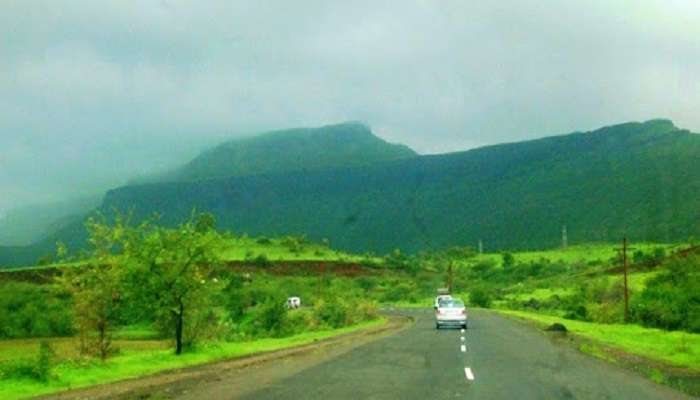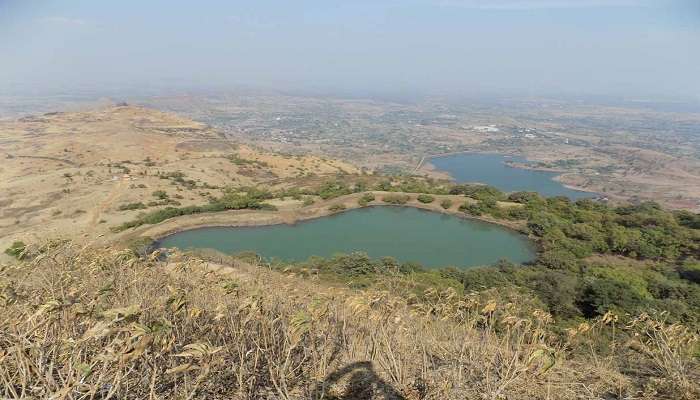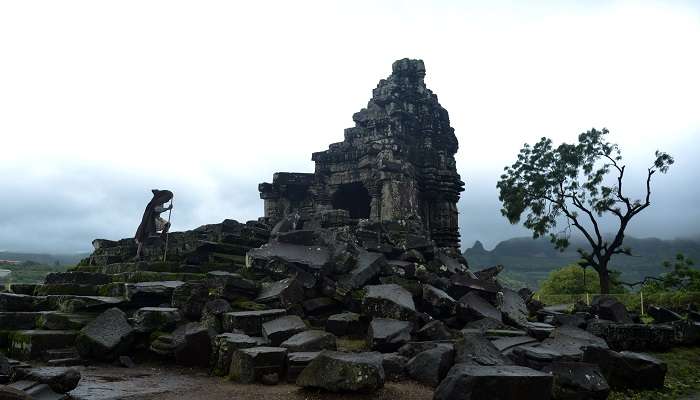Your Complete Guide To Explore Anjaneri Parvat In Nashik In 2026

Anjaneri Parvat, nestled near Nashik in the vibrant state of Maharashtra, isn’t just any mountain. In Hindu mythology, this is where the mighty Lord Hanuman, a figure of strength and devotion, is said to have been born. The peak, draped in legends and lush greenery, calls out to the adventurous spirit and the devout heart. Trekking to Anjaneri isn’t merely a physical challenge; it’s a journey steeped in stories of old, a chance to connect with the raw, untamed beauty of India’s landscape. As you ascend, each step brings you closer to the heart of ancient tales and the serenity of nature’s embrace. Whether you’re an experienced hiker, a history enthusiast, or someone simply seeking solace in the outdoors, Anjaneri Parvat promises an experience that lingers in your memory long after you descend.
A Journey Through Myth And Legend

In the heart of Hindu mythology, the story of Anjana echoes through the peaks of Anjaneri Parvat. It is said that here, atop this very mountain, Anjana, the mother of Hanuman, poured out her heart in prayer, yearning for a son. The gods listened, and her wish was granted with the birth of the powerful and devoted monkey god, Hanuman.
Visitors come to pay homage to the birthplace of a legend, seek blessings, and connect with the spiritual pulse that resonates through the mountain’s peaks and valleys. Every stone and tree whispers of the divine story that unfolded here, a tale that continues to inspire generations and weave its way into the hearts of those who journey to this holy site.
Also Read: Muktidham Temple
The Spiritual Journey

Anjaneri Parvat isn’t just another mountain to climb; it’s a journey that takes you back into the heart of ancient legends. The trek to the top is no walk in the park – it demands physical stamina and a deep reverence. But trust me, the payoff is extraordinary.
The path winds through a tapestry of vivid greenery alongside cascading waterfalls that seem to sing enchanting melodies. You’ll traverse rocky stretches, each step offering breathtaking glimpses of the surrounding valleys. As you ascend, the air becomes crisp and thin, and a profound tranquillity descends. It’s as if the mountain itself is preparing you for the spiritual awakening that awaits at its peak.
The Sacred Cave and Hanuman Temple

Ascending Anjaneri Parvat, the air thins, and the path steepens, but the journey is worth every step. At the peak, you’ll be greeted by a sacred cave steeped in legend and reverence. This is said to be the very birthplace of Lord Hanuman, the mighty monkey god. The cave’s walls are adorned with colourful images and statues of Hanuman, each radiating peace and power. Pilgrims and devotees come from far and wide to offer prayers, light incense, and seek blessings, their hearts filled with hope and devotion.
Nearby, the air hums with bells and chanting from the Hanuman temple. The temple’s vibrant colours and intricate carvings are a testament to the people’s deep faith and artistic traditions. Inside, the atmosphere is thick with incense and the warmth of shared devotion as worshippers come to pay their respects and find solace in their prayers.
Related Posts: Shri Vyankatesh Balaji Mandir
Nature’s Bounty and Panoramic Views

Beyond its spiritual significance, Anjaneri Parvat is a paradise for nature enthusiasts. The mountain is home to diverse flora and fauna, making it a haven for birdwatchers and wildlife photographers.
The summit’s panoramic views are breathtaking, encompassing rolling hills, verdant valleys, and distant villages. The sunrise and sunset from Anjaneri Parvat are mesmerising, painting the sky with a kaleidoscope of colours.
Planning Your Anjaneri Parvat Adventure

Best Time to Visit: The ideal time to visit Anjaneri Parvat is during the monsoon season (June to September), when the landscape is most vibrant. However, the trek can be slippery, so be prepared.
What to Pack: Carry comfortable trekking shoes, plenty of water, snacks, a raincoat or poncho, and a first-aid kit.
Trekking Essentials: The trek takes about 3-4 hours to complete, depending on your pace and fitness level. Start early in the morning to avoid the midday heat.
Respect the Environment: Anjaneri Parvat is a sacred place for many. Please be respectful of the environment and local customs. Avoid littering and disturbing the tranquillity of the area.
Related Posts: Sundarnarayan Temple
Explore Anjaneri Parvat: What To See And Do

Anjaneri Fort: Wander through the timeworn ruins of Anjaneri Fort, where fragments of history whisper tales of the past. Each stone seems to hold a memory, offering glimpses into the lives and times of those who once called this place home.
Jain Temples: The mountain is adorned with remnants of Jain temples, and their intricate carvings are a testament to the devotion and artistry of ancient worshippers. These delicate details invite contemplation and admiration for the skill and dedication that went into their creation.
Caves: Venture into the caves that riddle the mountainside. Some of them are believed to have served as sanctuaries for Jain monks seeking quietude and introspection. The cool air and serene atmosphere make it easy to imagine the peace these monks found in these hidden spaces.
Waterfalls: During the monsoon season, Anjaneri transforms into a cascading wonderland. Rainwater spills over the mountain edges, forming numerous waterfalls that tumble down the slopes. Their rushing sound is a symphony of nature’s power. The sight of these fleeting waterfalls is a breathtaking spectacle.
You May Also Like To Read: Sula Vineyards
Anjaneri Parvat is more than just a mountain; it’s an experience that will leave you spellbound. Whether you’re a devout pilgrim, an avid trekker, or a nature enthusiast, this majestic peak has something to offer everyone. So pack your bags, lace up your boots, and embark on a journey to Anjaneri Parvat, where myth and nature converge. Plan your next trip to Nashik today!
For our editorial codes of conduct and copyright disclaimer, please click here.
Cover Image Source: Mahi29 for wikimedia commons
Frequently Asked Questions About Anjaneri Parvat
How do I reach Anjaneri Parvat?
The nearest town is Nashik, well-connected by road and rail. From Nashik, you can hire a taxi or take a local bus to the base village, Anjaneri. The trek begins from there.
What's the best time to trek Anjaneri Parvat?
The ideal trekking season is during the monsoon (June to September) and post-monsoon (October to February) when the weather is pleasant and the surroundings are vibrantly green. Summers can be harsh, so it's best to avoid trekking then.
How difficult is the Anjaneri Parvat trek?
The trek is considered moderate, suitable for beginners and experienced trekkers alike. It takes about 3-4 hours to reach the summit, with a well-defined trail. However, be prepared for some steep sections and rocky terrain.
What should I pack for the Anjaneri Parvat trek?
Essentials include comfortable trekking shoes, layered clothing for changing weather, a raincoat (especially during the monsoon), sufficient water, snacks, a first-aid kit, and a torch. A camera is a must to capture the stunning views!
Are there any accommodation options near Anjaneri Parvat?
While there are no hotels on the mountain itself, you can find budget-friendly lodges and guesthouses in the base village, Anjaneri. It's recommended to book in advance, especially during peak season.
People Also Read:
Places To Visit In Maharashtra In Summer Places To Visit In Maharashtra In June Places To Visit In Maharashtra In July

With a passion for exploring and travelling to the roads long forgotten, experience the world through enthralling stories and adventures. Join me as I share my experiences at some of the world’s most popular tourist destinations and quench that pestering curiosity with something exciting!











